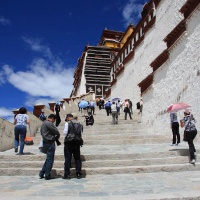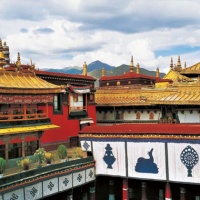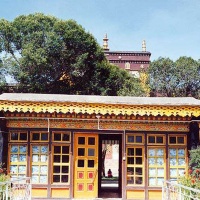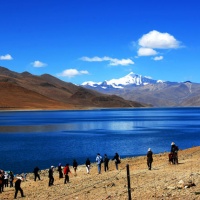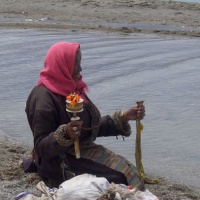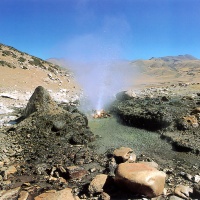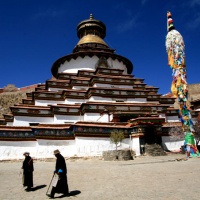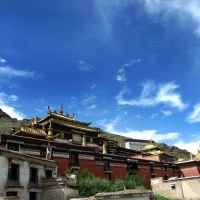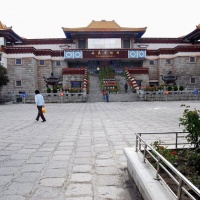- Home Page
- Fact Tours
Our sample tour itineraries of China and China travel packages are sorted by theme and available at competitive prices, you can browse what tours are right for you for your trip to China.
Popular China Tour Packages

Custom Tour Packages to China and Ask Our Experts for Free Enquiry !
- Coach Tours
- Destinations
Beijing, the capital of China. Its art treasures and universities have long made it a center of culture and art in China.
Beijing Top Attractions
Beijing City Tours
Best China Tours with Beijing
Shanghai, the cultural and economic center of East Asia. It renowned for its historical landmarks, the extensive and growing skyline.
Shanghai Top Attractions
Shanghai City Tours
Best China Tours with Shanghai
Xi'an, having held the position under several of the most important dynasties. It is the top destination to explore the facts of Chinese history.
Xi'an Top Attractions
Xi'an City Tours
Best China Tours with Xi'an
Huangshan boasts its culture, beautiful rivers, villages and mountains. It's home to 2 UNESCO World Heritage Sites and the Mecca of photographers.
Huangshan Top Attractions
Huangshan City Tours
Best China Tours with Huangshan
Sichuan is the cradle of the Shu culture, panda, mahjong, teahouse and spicy food. The province ranks first in China by number of UNESCO World Heritage Sites. It is called "the Heaven of Abundance".
Sichuan Top Attractions
Sichuan Tour Packages
Best China Tours with Sichuan
Yunnan, literally means the south of colorful clouds, due to its beautiful landscapes, mild climate and diverse ethnic cultures and traditions, is one of China's major tourist destinations.
Yunnan Top Attractions
Tibet, the nearest land to the sky, is known for its breathtaking landscape, splendid culture, art, buildings, and mysterious religions.
Tibet Top Attractions
Tibet Tour Packages
Best China Tours with Tibet
Explore the lost civilizations by riding a camel! Travel across the Gobi and the desert, and over the high mountains. Our Silk Road tours including different sections of the Silk Road in China.
Silk Road Top Attractions
Silk Road Tour Packages
Best China Tours with Silk Road
Guilin, an internationally-known historical and cultural city, has long been renowned for its unique karst scenery. Its vicinities are the paradise of hiking, caving, rafting, biking and countryside exploring.
Guilin Top Attractions
- China Facts
- China Hotels
- Travel Photos
Region Tours
7-Day Mysteries of Tibet
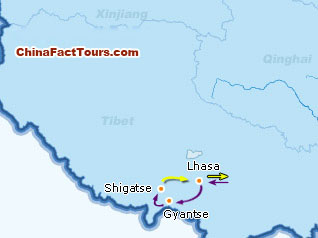
Destination: Lhasa, Gyangtse, Shigatse
Departs: It's up to you to decide
Tour Highlights
>>Sera Monastery
>>New Palace of Panchen
>>Yangpachen
>>Yamdrok Yumtso Lake
>>Palkhor Monastery
- Tour Itinerary
- Price Policy
- Highlighted Photos
Tour Overview
This travel package will show you a real Tibet! We will explore the mysterious Tibetan history, culture, architecture, religions, arts, medicines, the locals' life and some miracles on the Qinghai-Tibet Plateau.
Day 1 Arrive in Lhasa (no meals)
Fly to Lhasa from Chengdu (or Beijing, or Shanghai) or by Train from Beijing (Your arrangement)
Meet your guide at Lhasa Gonggar Airport and then be picked up to your hotel. Then free at leisure to acclimatize yourself to the high altitude reaction. Hotel: Tibet Hotel (4-star)
Day 2 Lhasa (B, L, D)
Today, your Tibet tour will start from the holy land of Tibetan -- Potala Palace. After lunch, proceed to visit the Sera Monastery, the Norbulingka Park and a Tibetan family. Dinner is served at your hotel.
- Sera Monastery
Sera Monastery was founded in 1419 by a disciple of Tsongkhapa named Sakya Yeshe. The monastery is famous for its monk debates which take place nearly every day of the week. The monks gather each afternoon to debate Buddhist teachings and philosophy. Though many monasteries across Tibet have debates, Sera Monastery is the best and most popular place to witness it. Today Sera Monastery has around 600 monks.
- Tibetan Family Visit
Paying a visit to a Tibetan family will give you a chance to touch the real life of Tibetan people. The hospital hosts will welcome you with the local buttered tea and wine and then show you around their houses. They will be glad to introduce their family and Tibetan customs to you and you can raise your own questions.
Day 3 Lhasa (B, L, D)
Pay a visit to the Drepung Monastery. After lunch, go ahead to visit the Jokhang Temple, the thriving bazaar of the Barkhor Street, the Traditional Tibetan Medicine Hospital and the Tibetan Carpet Factory. Dinner is served at your hotel
-Drepung Monastery
Drepung Monastery was once the largest Monastery in Lhasa (with over 10,000 monks). Today's sightseeing will begin with the white monastic buildings piled up on the hillside. Walking up to the hill is a pleasant thing, an easy break from the solemn ambience inside the halls and chapels. At the plat roof of the hillside, you will experience wonderful views of the whole of Lhasa city and the distant mountains.
- Tibetan Traditional Medicine Hospital
The Tibetan Traditional Medicine Hospital was originally built in 1916. It was the place of research for Tibetan medicine and calendar calculations for the former Tibetan local government. After a large expansion in 1980, the hospital became the center for the treatment, training, research and production of Tibetan medicine.
- Tibetan Carpet Factory
The Lhasa Carpet Factory produces traditional Tibetan rugs that are exported worldwide through Canton. The factory has developed into the biggest and the best in Tibet Autonomous Region with annual output of 30,000 miles of carpet. Tibetan Carpets, Persian Carpets and Oriental Artistic Carpets are reputed to be the best in the world.
Day 4 Lhasa /Gyangtse (B, L, D)
Drive to Gyangtse. Stop off at the Yamdrok Yumtso Lake. Transfer to the hotel. Visit the Palkhor Monastery and Gyangtse Old Street. Hotel: Gyangtse Hotel (3-star)
-Yamdrok Yumtso Lake
Yamdrok Yumtso Lake is one of the three largest sacred lakes in Tibet. It is over 72 km (45 miles) long. The lake is surrounded by many snow-capped mountains and is fed by numerous small streams. The lake does have an outlet stream at its far western end.Around 90 km to the west of the lake lies the Tibetan town of Gyantse and Lhasa is a hundred km to the northwest. According to local mythology, Yamdok Yumtso lake is the transformation of a goddess.
- Palkhor Monastery
Palkhor Monastery is located over 230 kilometers south of Lhasa. The monastery is unique in Tibet for it has the characteristics of Tibetan, Han, and Nepal architectural styles and is home to three sects of Buddhism, the Sakyapa, Kadampa, and Gelugpa sects.
-Gyangtse Old Street
Gyangtse Old Street is an ideal location to capture and insight into the daily life of the Tibetan people. The street is long and comfortably wide, and is paved with flagstones and clay. Houses stand on both sides of the street, one and two storey, built in the local architectural style and decorated with snow-white walls and vermeil door and beams.
Day 5 Gyangtse /Shigatse (B, L, D)
Drive to Shigatse and transfer to the hotel. Visit the Tashilhunpo Monastery and the New Palace of Panchen. Hotel: Shigatse Hotel (3-star)
- Tashilhunpo Monastery
Tashilhunpo Monastery is one of the main attractions in Shigatse. It is one of the most important Gelug sect monasteries in Tibet and is home of the Panchen Rinpoche (Lama).
- New Palace of Panchen
New Palace of Panchen is known as the summer palace of the tenth Panchen Lama and is a wonderful blend of the traditional and modern architectural style. The palace, reached after passing three gates, offers beautiful interiors of Panchen Lama bedrooms, drawing rooms, sutra hall, Buddha hall and Buddhist Guardian Hall. Amongst valuable cultural relics of the palace are the spectacular frescos. The surroundings of the palace covered with greenery provides a tranquil environment, from there you can relax and refresh yourself.
Day 6 Shigatse /Lhasa (B, L, D)
Today we will drive back to Lhasa city via Yampachen, where you can enjoy the grassland view and hot spring. Dinner is served at your hotel.
Day 7 Lhasa /Departure (B)
If time permits, visit the Tibet Museum. After that, we will transfer you to the airport for the flight to your next destination.
-Tibet Museum
The Tibet Museum is worth visiting when you come to Lhasa. It shows you the long history of the cultural exchange between Tibetan and Han people. Besides, it is an advanced position to conduct the education of patriotism and display the achievements that have been made in spiritual civilization.
Services End
Price included
·Tibet Entry Permit arrangement
·Hotel Accomodation-the hotel accommodation is based on two persons sharing one twin room with private facilities.
·All transportation, transfers and tours with private guide and car or van in each destination.
·All the admission tickets, English speaking guide service.
·Daily breakfast at the hotel, Chinese lunch and dinner with one cup of soft drink are offered outside the hotel or as specified in the itinerary.
·The government tax.
·Travel Agencies' Liability Insurance with the tour inside China. (Include China Life Tourist Accident Insurance/Casualty Insurance. We highly recommend that you purchase full coverage travel insurance from you country of origin.)
Price exclude
·Charge of obtaining your visa to enter China.
·In/out flight, domestic airport fee and departure tax is not included. (We can help you book the cheap tickets!)
·Gratitude to guide and driver is not included.
·Expenses of a personal nature such as laundry, drinks, telex, optional activities or sightseeing, telephone calls or overweight baggage charges or meals not indicated etc.
·The airport construction tax.
How to Book a China Tour
Sending Inquiry > Get Quotation > Confirm Your Tour > Send Payment > Enjoy ToursQuestions & Comments
Home | About Us | Partnerships | Terms & Conditions | Privacy & Security | Payment Guide | Resource Links| Sitemap
Email: contact@chinafacttours.com, Tel: +86-773-3810160, Fax: (+86) 773-3810333
Copyright © 2008-2022 China Fact Tours. All rights reserved
![]()











